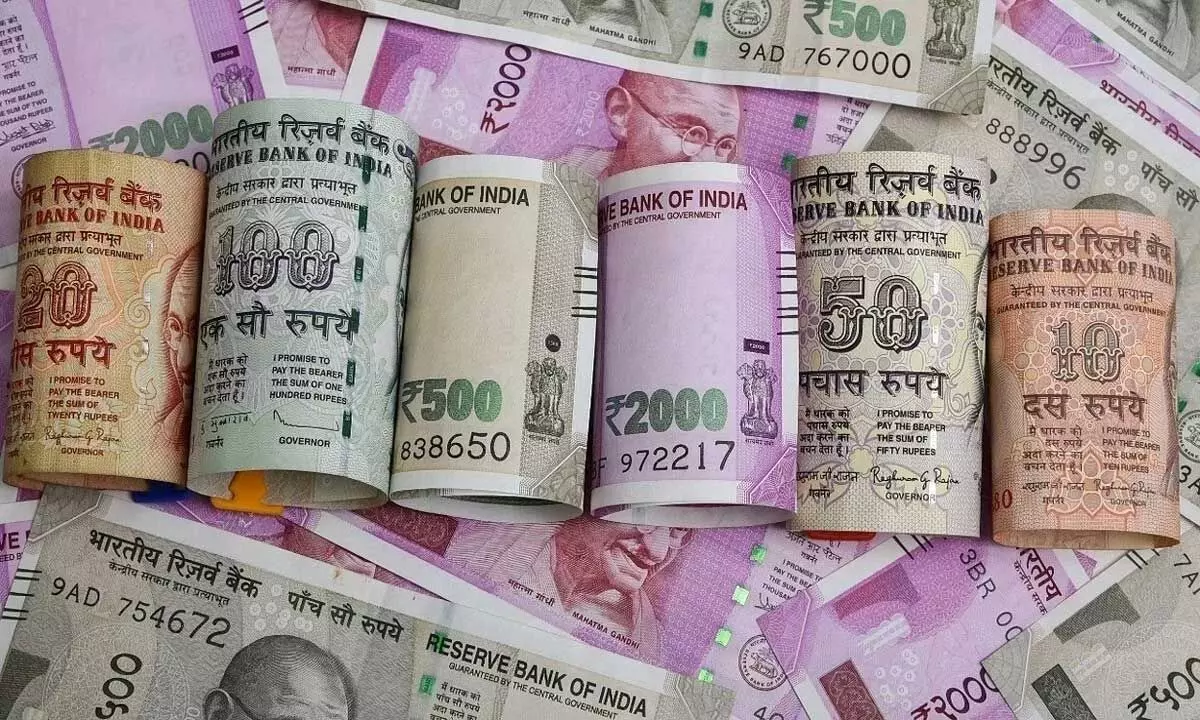2022: Many pluses, some minuses
Indian economy did better in 2022, but concerns like rising deficits, subsidies, sluggish mfg and govt meddling still remains and are likely to get exacerbated in 2023, for there general elections would be in 2024
image for illustrative purpose

Public finance has been showing worrisome trends. The fiscal deficit in the first seven months of this fiscal was 45.6% of the Budgetary estimates, whereas in the corresponding period of the previous year (COPPY), it was 36.3%. The corresponding figures for the revenue deficit are 38.8% and 27.5%, and for the primary deficit 38.4% and 20.9%
The Indian economy did better than most of the other major economies in 2022, but there are many causes for concern, ranging from rising deficits and subsidies to sluggish manufacturing and government meddling. Some of these concerns are likely to get exacerbated in 2023, for there general elections would be in 2024. This is likely to increase the role of political factors in policy.
In her Budget 2022-23, Finance Minister Nirmala Sitharaman estimated the economic growth to be 9.2 per cent, the highest among all the large economies of the world. But the Russia-Ukraine war began in the same month, derailing the post-Covid recovery, disrupting supply lines, and triggering a spurt in oil prices. All this hurt the world economy; India was no exception.
The gross domestic product grew by 6.3 per cent in the July-September quarter. Importantly, all sectors have crossed the pre-Covid levels. The World Bank has upgraded India's growth rate to 6.9 per cent for the current fiscal. It is impressive compared to other economies.
There was a great deal of jubilation in the country, especially by the government and the Bharatiya Janata Party, in September when India overtook the UK to become the world's fifth largest economy. A critical element sometimes ignored in that celebratory mood was that the UK's population is 20 times less than ours, which makes the British people 20 times richer than Indians.
Public finance has been showing worrisome trends. The fiscal deficit in the first seven months of this fiscal was 45.6 per cent of the Budgetary estimates, whereas in the corresponding period of the previous year (COPPY), it was 36.3 per cent. The corresponding figures for the revenue deficit are 38.8 per cent and 27.5 per cent, and for the primary deficit 38.4 per cent and 20.9 per cent.
Then there is also the current account deficit (CAD), which is rising because of sluggish exports and costlier crude. The median forecast of 18 economists in a December 5-14 Reuters poll was for a $35.5-billion CAD in the July-September quarter, or 4.3 per cent of GDP, the highest since 2012-13.
One reason is the rising imports from China, India's second biggest trading partner after the United States. In the last fiscal, the India-China trade was $115.83 billion. This was 11.19 per cent of India's total merchandise trade of $1,035 billion. We had a trade deficit of $73.31 billion with China in 2021-22.
Owing to the bloody clash at Galwan in June 2020 and the ensuing tensions and restrictions, there was a dip in the imports from China in 2020-21, but that proved to be temporary. Imports again zoomed in 2021-22. It is not just the trade with China that has grown in the last 21 years; India's trade deficit too has risen from $1 billion to $73 billion in this century. And the trend remains strong.
India's merchandise exports have not been doing very well because of the weaknesses in our manufacturing sector. As Bizz Buzz reported earlier, in the January-October 2022 period, 776 industrial entrepreneurial memorandums (IEMs) with investment of Rs 209,141 crore reported implementation of the industrial projects they had intended to set up. In comparison, there were 674 IEMs with investment of Rs 297,446 crore in the first 10 months of calendar year 2022. So, there was a decline of almost 30 per cent in terms of actual industrial investment.
Retail inflation zoomed to 7.41 per cent in September, though now it is declining, having come down to 5.88 per cent in November.
There was hardly any privatization in 2022, but that was not because of the lack of efforts on the part of the government. BPCL selloff was shelved because there was a single bidder. The sale of Shipping Corporation also didn't take place. Similarly, no public sector bank has been privatized, though the government seems inclined.
In the last fortnight of the year, the Central Bureau of Investigation had arrested former ICICI Bank CEO Chanda Kochhar, her husband Deepak Kochhar, and Videocon group chairman Venugopal Dhoot, sending shock waves across the corporate and banking sectors. The purpose was not clear, for it is a four-year-old case. Arrest is made when the accused persons are likely to tamper with evidence, influence the investigation, intimidate the witnesses, etc. They would already have done all that if they wanted to in the last four years. So, why were they arrested now?
The decision seemed to be the government's desire to present itself as tough on corruption. Nobody disputes action against wrongdoers, but the action should be real, not for optics. Unfortunately, in this case, the arrests seemed to have been made with an eye on the forthcoming state and general elections. There is already a fear among businesspersons of the hyper-activism of Central agencies like the CBI and the Enforcement Directorate.
This fear is corroding the good work in terms of policy and decision making the Narendra Modi government has been doing to open up the economy, attract investment, boost growth and development, and generate employment. Hopefully, in 2023 the government would try to convince investors that they would not be subject to any arbitrary action.

